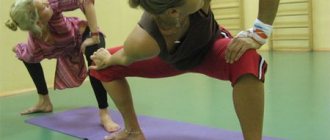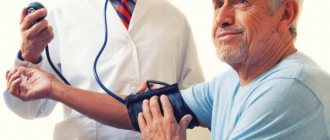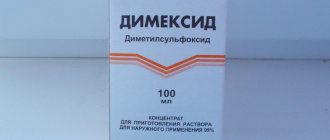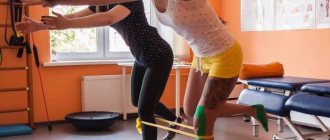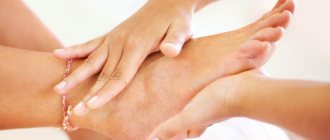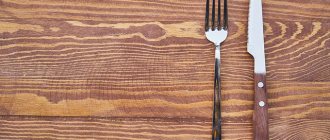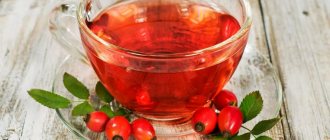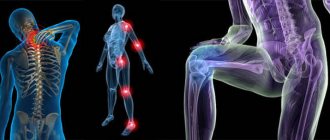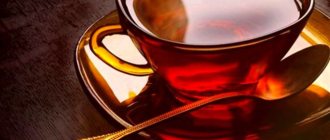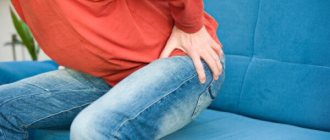The essence of the disease
Gout on the legs is a disease caused by metabolic pathologies, resulting in the deposition of salts in the joints. In another way, it is called “the disease of kings.” This name for gout is explained by the fact that it occurred among noble people back in the time of Hippocrates.
In the modern world, this disease is a relatively rare phenomenon; according to statistics, it occurs in 3 people out of 1000. As a rule, the disease occurs in men after 40 years of age and in women during menopause.
The disease affects all joints of the legs, even those located directly in the toes.
The provocateurs of the development of the disease are considered to be bad habits in the form of alcohol abuse and eating large amounts of junk food.
The disease can be cured by taking medications, but the process of getting rid of gout can be accelerated only by performing special exercises and visiting a professional massage therapist.
Exercise therapy for gout
Physical exercises, activating and normalizing all types of metabolism, blood circulation both throughout the body and locally in the affected joints, restore impaired mobility in them, reduce the severity of pain, enhance the effect of the dietary factor, activate the excretion of uric acid in the urine, etc. . Exercise therapy in combination with massage is an essential element of complex treatment for gout.
Objectives of exercise therapy and massage for gout:
• improve blood and lymph circulation in affected joints, skin, muscles;
• promote the resorption of exudate; reduce pain and stiffness in joints; relieve tension in the muscles of the limbs, improve their trophism, tone and strength;
• restore normal range of motion in joints, improve the function of movement of legs and arms;
• prevention of gouty ankylosis;
• help increase diuresis and remove uric acid salts from the body;
• improve the function of the cardiovascular and respiratory systems;
• normalize all types of metabolism, including protein;
• improve the patient's mental state;
• strengthen the entire body, increase the volume of physical activity and maintain performance.
Forms of exercise therapy: therapeutic exercises, training on simulators, hydrokinesitherapy, morning hygienic exercises, dosed walking. In the initial stages of the disease, while the severity of functional and morphological disorders is insignificant, along with therapeutic exercises, the exercise therapy complex includes sports exercises, games, and a health path.
Exercise therapy means: general developmental exercises for large muscle groups of the upper and lower extremities and special ones for the muscles surrounding the joints; breathing exercises - static and dynamic; active exercises for all unaffected joints with full range of motion; isometric exercises for the muscles of the upper and lower extremities.
Selection of patients. When selecting patients, the following factors are taken into account: period of the disease (acute, chronic, interictal); condition of the joints (presence or absence of deformities, contractures, severity of changes in joint function); state of the cardiovascular system; severity of hypodynamic manifestations.
Exercise therapy is prescribed in group and individual forms.
Individual classes are carried out with patients who have acute and subacute forms of the disease with pain, joint deformities and contractures, poor functional state of the cardiovascular system, and a long period of physical inactivity. After the disappearance of pain and improvement in the functional state of the cardiorespiratory system, the patient can be transferred to a group form of exercise.
Group classes are indicated for chronic gout in the absence of pain and satisfactory condition of the cardiovascular system. Deformation of the joints and moderate pain in them are not a contraindication for inclusion in the group.
Initial position. The choice of starting position depends on the nature of the exercises performed and the stage of the disease. At the beginning of the course of treatment, the initial positions are used: lying and sitting, later - standing.
Passive movements are carried out when the process is localized in the lower extremities, in the i.p. lying on your back and stomach; if the upper limb is affected - lying on your back or sitting.
Active movements throughout the course are carried out in and. gg. lying, sitting and standing depending on the affected part of the body.
The main tasks of exercise therapy in the acute period of gout are to relieve pain and relieve inflammation. Due to the limited means of exercise therapy for this condition, the patient is usually recommended to rest for 2-3 days (short-term bed rest) in combination with immobilization and elevated position of the affected joint. Acupressure provides some pain relief. Exercise therapy and classical massage in the acute course of the disease are carried out in the interictal period.
When the inflammatory process subsides (decrease in temperature, decrease in inflammation and pain in the affected joints), the patient is indicated for therapeutic exercises. It is aimed at developing endurance and muscle strength, improving the function of the movement apparatus. During the period of remission, it is advisable to combine JIG with physiotherapeutic procedures (warm baths, paraffin and ozokerite applications, etc.) and massage. It is recommended to carry out thermal procedures and massage immediately before therapeutic exercises. Hydrotherapy (cold and contrast showers or douches), as well as aerobic exercises, are recommended for general health improvement and increasing the level of metabolism.
A distinctive feature of the method of therapeutic exercises for gout is the combined use of special exercises (passive and active movements in diseased joints) against the background of general development (for large muscle groups) and breathing exercises, which improve general metabolism and normalize the functional state of the central nervous system.
In the first half of the LH course, it is necessary to select exercises for large muscle groups of the limbs and torso, which have an activating effect on the overall metabolism, passive movements and exercises for the diseased joint (flexion and extension, abduction and adduction, rotation). If movements in a sore joint are severely limited and painful, it is good to first develop movements in warm water, which reduces pain and increases the effectiveness of exercises.
The set of LH exercises for joints is standard. For fingers, these could be the following exercises:
• flexion and extension in the interphalangeal and metacarpophalangeal joints of the hand with mandatory fixation of the overlying segment;
• touching the pad of the thumb with the pads of the other fingers;
• touching the various joints of the remaining fingers with the thumb;
• connecting the thumb with the tips of the rest to form the letter “O”;
• abduction, adduction and rotation of the thumb;
• clenching your fingers into a fist;
• spread of fingers, etc.
Depending on the period of the disease and the level of pain, these exercises can be performed passively, actively or with resistance.
Passive and active movements in diseased joints must be carried out with the maximum possible amplitude, but without significantly exceeding the pain threshold. It is recommended to perform each exercise starting from 4-6 times, gradually increasing their number to 10; repeat the complex 4-5 times a day. The pace of movement is slow. Movements in a sore joint must be alternated with simple exercises for large muscle groups.
When treating patients with gout, it is necessary to include breathing exercises, mainly dynamic ones, in the PH exercise complex.
In the second half of the LH course, treatment of residual joint dysfunctions joins the main therapeutic tasks. During this period of the course, passive and active movements in diseased joints are recommended to be carried out with full amplitude, even in the presence of known pain. To develop movements in diseased joints, along with active and passive movements, exercises with objects (dumbbells, clubs), on devices (wooden ladders, mechanotherapeutic devices, exercise equipment for small joints), work with rubber bandages, etc. are used.
The number of repetitions of the exercise should be quite large - J0-15 or more times. At the beginning of the lesson, the movements are performed at a slow and then at an average pace.
During the classes, exercises are also used for large muscle groups - without weights and with the use of gymnastic apparatus (dumbbells, medicine balls, etc.), exercise machines, including strength ones. Isometric exercises are effective for developing strength, especially in the presence of residual inflammatory phenomena - they increase local blood flow to a lesser extent.
The method of exercise therapy for chronic gout is similar in structure to that described above, used in the subacute period. However, it is necessary to pay more attention to reducing the constant pain syndrome; for this, the course of treatment more actively includes massage (classical, acupressure, segmental), warm baths, paraffin and mud applications, and various electrical procedures.
Independent studies. A person with gout should additionally perform short independent exercises for the affected joints. Passive and active movements are recommended to be performed up to 5-6 times during the day, depending on their tolerance, preferably in combination with self-massage. Activities that enhance the patient’s lifestyle are also recommended. This could be UGG, health path, hiking, skiing, etc. When the inflammatory process in the joints subsides, you can move on to a more intense system of physical exercises - general and strength endurance training: the former ensure the activation of general metabolic processes in the body, a more active excretion of uric acid salts; Strength training reduces the likelihood of osteoporosis, a characteristic of joint diseases.
7.11.2. Massage for gout
Before prescribing a massage, the nature of the process (acute, subacute, chronic) and the degree of functional damage to the joints should be determined.
In the acute period of the disease, movement in the affected joints is limited and their swelling is pronounced. The muscles that fix the joints, including adjacent ones, are sharply tense. During this period, massage is not prescribed.
Massage, both private (on the area of sore joints) and general (with an emphasis on kneading the muscles to increase metabolism in the body), is carried out in the period between attacks.
It is recommended to first identify the segmental zones of the kidneys, upper and lower extremities, upon which massage becomes more effective.
When there is a disease in the joints of the hands, the patient is in a sitting position, although in the first sessions a lying position can be used. The massage begins with the area of the upper thoracic and cervical segments, then massages the shoulder joint, upper arm, elbow joint, forearm, wrist joint, hand, and fingers. The massage is carried out using the suction method. In the first sessions, stroking techniques are mainly used, then rubbing techniques are included, and subsequently all massage techniques are used.
For diseases of the leg joints, the patient's position is lying on his stomach. Begin the massage from the sacrum area, then move on to the lumbar and lower thoracic areas. After their detailed study, the buttocks, hip joints, thighs, legs, feet of both legs are massaged, also using the suction method. When acting on the ankle joint, the places of attachment of the Achilles tendon to the heel tubercle, the inner and outer malleolus, and the anterior gap of the joint are carefully worked out.
When incorporating shiatsu techniques into the massage procedure, the massage therapist applies pressure first with the palm and then with the thumbs on points on both sides of the lumbar column from the interscapular space towards the lumbar region with special emphasis on the kidney projection area. Then the attachment zones of the gluteal muscles are worked out (on both sides simultaneously), after which, without touching the swollen, painful area of the foot (if the inflammatory process is localized on the foot), the massage therapist acts on its base and points of the internal arch. While lying on your back, massage the entire abdominal area.
The massage procedure lasts 12-15 minutes on the upper limbs and 20-25 minutes on the lower limbs; daily or every other day. Course - 15-20 procedures.
Rehabilitation
By regularly performing special gymnastic exercises and following the rules of a healthy diet, you can normalize the functioning of all processes in the body, and, therefore, get rid of gout in the legs.
It is recommended that the set of necessary sports activities be selected by the attending physician, taking into account the following factors:
- condition of the joints: there is or is no deformation;
- form of the disease: chronic or acute;
- condition of the cardiac and vascular systems.
If gout in the legs is only at the initial stage or there is a predisposition to the development of this disease, then you are allowed to select gymnastic exercises yourself.
Moreover, in the case of painful sensations in the joints, visible deformations and an acute form of the disease, sports manipulations should be abandoned.
For patients with chronic gout on the legs, the following groups of physical exercises are recommended:
- preparatory and corrective nature, respiratory tract gymnastics;
- outdoor games;
- swimming and rowing (in summer), skating and skiing (in winter).
For greater effectiveness of treatment, to prevent complications, to avoid exacerbations of the disease, you need to engage in physical therapy and therapeutic exercises for gout on the legs. You also need to lead an active lifestyle, get rid of bad habits and adhere to a diet. You need to listen to your doctor’s advice and be treated using official medicine, but a healthy lifestyle is the most important factor in recovery. Gymnastics performed for gout on the legs vary depending on the affected areas.
Gout is a disease associated with metabolic disorders, leading to an increase in the level of uric acid in the blood (hyperuricemia), deposition of uric acid crystals in tissues and inflammation in the joints developing in connection with this.
BRIEF INFORMATION FOR THE PATIENT ABOUT HOW GOUT DEVELOPES
Uric acid is a product of protein metabolism in the human body. Normally, it is excreted by the kidneys. In gout, uric acid is either produced in excess by the liver or is not excreted by the kidneys. As a result, large amounts of uric acid begin to circulate in the blood (hyperuricemia). In some people with hyperuricemia (predisposed individuals), uric acid crystals form and deposit in the tissues, leading to inflammation. Most often, crystals are deposited in the cavities of the joints, but they are also detected in the tissues of the kidneys, heart, blood vessels, stomach, intestines, and even in the chambers of the eye.
Diet for gout
Dietitians have specially developed a diet - TABLE No. 6. It excludes the intake of foods containing large amounts of purines and limits the intake of salt and fat. Drinking plenty of, mostly alkaline, fluids is recommended. It should be noted that completely eliminating salt from the diet (salt-free diet) leads to an increase in the level of uric acid in the blood.
IT IS IMPORTANT TO KNOW! TABLE No. 6 is prescribed to patients with gout who have normal body weight. If you are overweight, you need to limit your intake of carbohydrates and fats.
It is recommended to eat in small portions, and not to overeat, especially at night.
Can:
All types of fish, including cod, haddock, flounder, herring, mackerel, sardine, tuna, salmon (smoked and salted fish are not recommended).
Dairy products: cottage cheese, skim or 0.5% fat milk, low-fat cheeses.
Boiled meat 2 times a week (low-fat varieties: turkey, chicken, veal, game, rabbit, young lamb). Preference should be given to long-cooked meat, because... purines are boiled down.
Wholemeal bread, breakfast cereal, porridge, durum wheat pasta, rice.
- Vegetable soups (vegetarian!).
- Yogurt salad dressings.
- Vegetable (olive, sunflower, etc.) oil.
- Nuts (all types, including avocado, but fatty varieties in moderation),
- Fruits and vegetables*
*It is a misconception that purines contained in vegetables can cause an increase in uric acid levels in the blood and thereby provoke acute arthritis.
In fact, purines contained in vegetables undergo rapid elimination, so they do not pose a danger.
Drinks you can drink:
- Alkaline drink (mineral water), jelly, cranberry and lingonberry fruit drinks, rosehip decoction, tea, coffee.
- It is recommended to drink milk, as a number of its components remove uric acid
- On average, it is recommended to drink 1.5 to 2.0 liters* of fluid per day.
*However, for patients with arterial hypertension, heart failure, impaired renal function, or prostate adenoma, this volume should be reduced (you should consult your doctor on this issue).
It is necessary to exclude:
- Liver, kidneys, brains and other offal, ham, sausages, canned meat, jellied meat, game (goose, duck).
- Smoked fish, balyk, fish caviar.
- Butter rolls, pies, premium bread.
- Processed cheeses.
- Soups with meat broths.
- Butter, lard, margarines.
- Chips (any kind due to the method of preparation, use of fats).
- Salty sauces, mayonnaise.
- Coca-Cola and other fizzy sweet drinks.
- Butter creams, pastries, cakes*.
*Fats delay the removal of uric acid from the body
Not only the quality, but also the quantity of food eaten plays a big role!!!
For example, if you allow yourself one sandwich with cheese for breakfast, nothing bad will happen, but if your entire daily diet consists of sandwiches with cheese, arthritis cannot be avoided, since even 100 g of low-fat cheese contains 20 g of fat.
To normalize weight, 1-2 days a week should be fasting.
Weight loss doesn't have to be quick! Fasting will only harm your health and cause an exacerbation of gout. You need to lose weight gradually, no more than 100-200 g per week.
Alcohol
It has been proven that alcohol intake leads to an increase in the level of uric acid in the blood, both with occasional and chronic use. Many patients associate exacerbations of arthritis with alcohol intake. It is well known that the incidence of gouty arthritis in people who drink alcohol regularly is significantly higher.
It is strictly forbidden to:
- Beer, including non-alcoholic beer, contains a lot of purines, from which uric acid is produced in the body.
Strong drinks (vodka, whiskey, gin, etc.), fortified wines make it difficult to remove uric acid from the body.
- Dry wine (white and red) – in moderation, has the least ability to cause a rise in uric acid (1-2 glasses per day are allowed).
You need to know that drinking alcohol with drugs taken to treat inflammation in the joints (non-steroidal anti-inflammatory drugs) is not only undesirable, but also contraindicated! This is associated with an increased risk of gastrointestinal bleeding and liver damage.
There was also a decrease in the effectiveness of allopurinol in patients who constantly take alcohol, since under the influence of alcohol, the metabolism of allopurinol to active substances is reduced. The opinion that the dose of allopurinol needs to be increased in case of alcohol intake also does not have sufficient grounds; such tactics can lead to the development of adverse reactions to allopurinol.
It is also undesirable to drink alcohol for patients undergoing therapy prescribed for arterial hypertension or diabetes mellitus.
Physical exercise
Physical activity increases the excretion of uric acid from the body and reduces the level of lipids in the blood.
It should be remembered: when engaging in physical education, fitness or other sports, with sufficiently severe physical activity, lactic acid can accumulate in the muscles, which usually leads to an increase in uric acid levels and provokes the development of arthritis. Therefore, the load should be increased gradually and the intensity of the workout should not be increased until muscle pain appears. It is the appearance of pain that signals the accumulation of lactic acid in the muscles.
Type of exercise: cardio training (exercise bike, treadmill, measured walking, swimming, skiing). Regarding strength exercises, you should consult a doctor, as it is necessary to take into account the condition of the joints and concomitant diseases
Duration and frequency: depends on how you feel, optimally 30-45-60 minutes 3-4 times a week
ATTENTION! Shortness of breath, profuse sweating, palpitations, a feeling of interruptions in the heart, freezing, as well as discomfort in the heart area are not indicators of an effective workout! If these complaints occur, you should immediately stop training and seek medical help!
Features of nutrition, drinking regimen and physical activity must be discussed with a doctor, since what is suitable for one patient may harm another. No information, either electronic or printed, can replace consultation with a doctor.
Work and rest schedule
Despite your daily busy schedule, you should ensure that you get a full 7-8 hours of sleep at night. Shorter sleep leads to imbalance of hormones in the body, causing overweight and obesity.
WHEN AN ATTACK OF GOUT OCCURS, IT IS NECESSARY TO CONSULT WITH A RHEUMATOLOGIST SO AS NOT TO MAKE MISTAKES, HARM YOUR HEALTH, OR LEAD TO THE DEVELOPMENT OF CHRONIC FORMS OF THE DISEASE.
Exercises
Gymnastics for knee joints:
- The position is taken, lying on your back, the knee is bent, and then straightened, first without resistance, and then with resistance.
- You need to sit on the floor and stretch your legs, alternately bending them at the knee with maximum tension.
Exercise for the joints of the lower leg, feet and wrist:
- You need to take a position lying on your back, legs should be straightened as much as possible, and arms should be placed along the body. Slow inhalations and exhalations are carried out, at the same time the fingers and toes are bent (the presented actions are performed 10 times).
- The starting position is similar to the previous one. Rhythmic inhalations and exhalations are performed, in parallel with which the joints of the lower leg and wrist are bent. Actions are performed 10 times.
- You need to sit on a chair and bend your legs, maintaining an angle of 90 degrees, feet apart at a distance of 30-50 centimeters, hands placed on your knees. You need to raise your feet as high as possible, while focusing on your heels. Performed 4-6 times.
- The starting position is similar to the previous one. You need to take 7 steps with each foot.
- This exercise requires steps. You need to stand on any of the steps so that your heel hangs down. We hold onto the railing with our hands. Next, rotations are performed with the feet in any direction. Rotations are performed 100 times on each leg. If such a large number of repetitions begins to cause pain, then you can reduce the number of repetitions to 20 times on each leg.
In addition to performing the exercises presented, you need to pay special attention to your diet. Meals should be taken up to six times throughout the day, in small proportions. You need to increase the amount of fluid consumed.
If gout is in an acute stage, then it is recommended to adhere to a strict diet and give up different types of meat and fish, eggs and alcoholic beverages.
Gout is a joint disease that can only be treated comprehensively, namely by taking medications, performing special exercises, visiting a massage therapist, and proper nutrition. If one of your relatives suffered from gout, then you can protect yourself by performing the presented exercises as a preventive measure.
Exercises for gout and preparation for them
Before you start doing a set of physical exercises for gout, you need to consider:
- nature of the disease;
- “well-being” of joints;
- cardiovascular system and its condition.
Types of exercises for gout according to the number of people involved:
- group;
- individual.
Whether to study in a group or individually depends on the degree of the disease and the general condition of the body. Group exercises are ordinary therapeutic exercises, which are aimed at overall improvement of the condition of the whole organism. Active games are also a good remedy in this case. Treatment of gout also includes outdoor games. But you must remember to be careful and gradually load your body.
In addition, breathing exercises should not be neglected; they are a mandatory component of the exercises. Only a properly constructed set of exercises will help alleviate the chronic form of the disease. Individual exercises take place when the body is not ready for group exercises. The individual form is used for the subacute nature of the disease. In this case, the basis of the exercises is gymnastics for the joints. Also important components are the same breathing exercises and walking.
More about the latter: walking in pleasant weather brings you, in addition to joy and pleasure, also benefits for your joints. So why neglect such a useful pleasure? You just need to listen to your body with every movement so as not to aggravate the gout of your legs.
